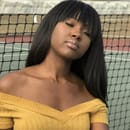The word queer was first used as a derogatory slur during the late 19th century to attack people who desired same-sex relationships. It wasn’t until the late 1960’s that queer scholars and activists like Marsha P. Johnson, Sylvia Rivera, Audre Lorde, Alice Walker, etc. began a movement to reclaim the word, creating a community and identity that is inclusive.
Typically, the word queer is used as an umbrella term for those who are not cis-gendered and have a sexual orientation that is not exclusively heterosexual; meaning, they do not identify as their sex assigned at birth and are attracted to the same sex.
Although the umbrella term exists, it is imperative that we acknowledge the identities which are underneath. Intersex, trans, asexual, aromantic, pansexual, polysexual, etc. are all examples of identities that are underneath the queer umbrella and the acknowledgment of said identities or others makes people feel seen. As people discover new identities, the spectrum to which queer identities exist expands and remaining open-minded encourages this.
It was not easy, and it has taken me some time to come to terms with acknowledging my own queer identity, but after much research, I now understand that my pansexuality and non-binary (genderqueer) identity are valid. Meeting other queer people like myself online and face-to-face has aided me in becoming more comfortable with myself while being apart of a great community. I had to realize that although I may share the same queer identity as someone, we may not have the same experiences as queer people and that is normal.
To me, being non-binary means that I feel I do not exist within the gender binary (she/he). There are some days where I feel like being hyper-feminine; I’ll wear make-up and for the most part appear to be feminine presenting. However, there are other days where I don’t feel like being feminine at all. I just want to exist. It wasn’t until I was advised by a friend to identify with “whatever makes me feel more like myself” that I decided to identify as non-binary or genderqueer.
One’s appearance may not suggest or imply their gender and it is more respectful to ask than assume someone’s gender. Since people identify outside of the binary, pronouns other than she/he are often preferred and should be used to acknowledge the person who is genderqueer. It is important to note that some identities overlap but being genderqueer is not to be mistaken for trans or transgender because not every genderqueer person is trans and not every trans person is genderqueer.
Creating the distinction between various queer identities aids individuals in self-discovery. We now have the nomenclature to describe how we feel about ourselves and our bodies that did not exist years ago and it is constantly expanding. We still have work to do within the LGBTQIA+ community but respecting if not understanding those with identities different from our own makes it easier for others to feel comfortable existing in their skin.


